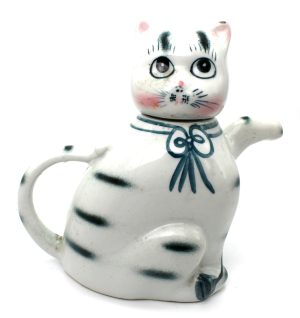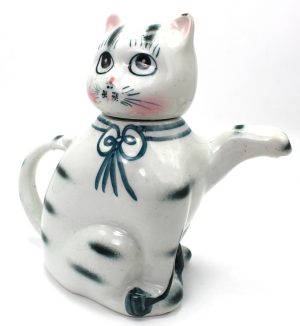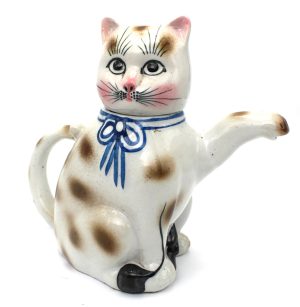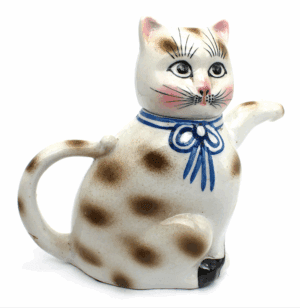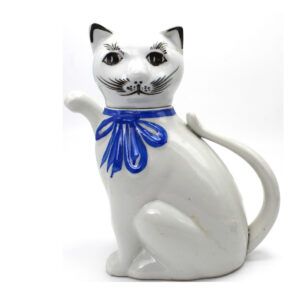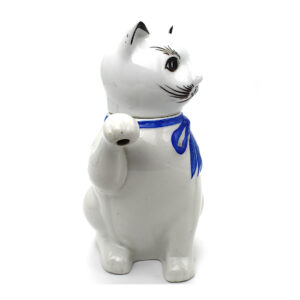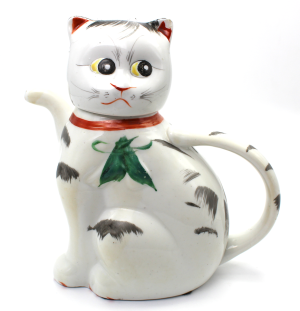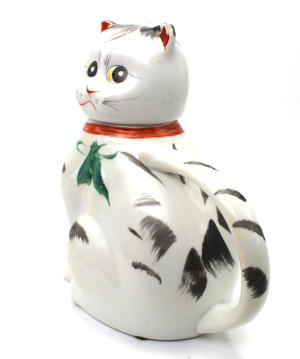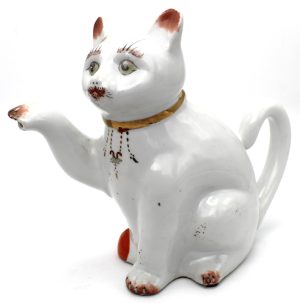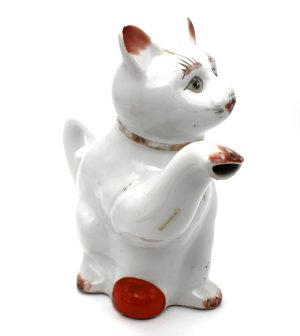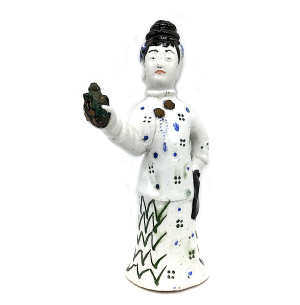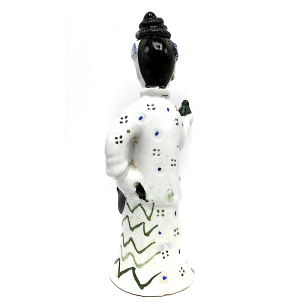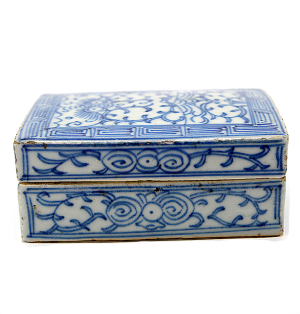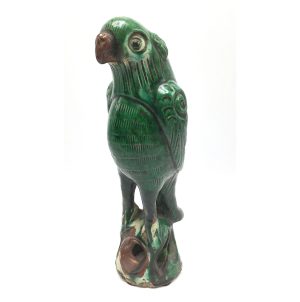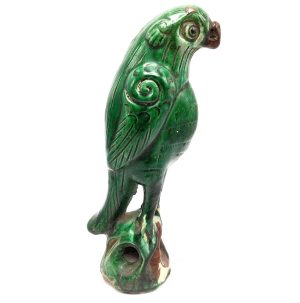Showing 13–20 of 20 results
-
Sale!


$145.00 Original price was: $145.00.$125.00Current price is: $125.00.
H: 7” W: 8” D: 3.625” | FREE SHIPPING WITHIN CONTINENTAL U.S.
Rotund porcelain teapot with removable head. With her pink highlights, round wide eyes, feathered brows and 3 part ribbon with bow she appears to be an affectionate female lap cat.
-
Sale!


$145.00 Original price was: $145.00.$125.00Current price is: $125.00.
H: 7” W: 8” D: 3.625” | FREE SHIPPING WITHIN CONTINENTAL U.S.
Unique rotund teapot of cat protectively sitting on a mouse. Raised paw spout, removable head and sinuous tail handle. Blue collar ribbon with bow symbolize long life. Black, pink, brown accents on face, ears, head, paws and body.
-
Sale!


$130.00 Original price was: $130.00.$115.00Current price is: $115.00.
H: 8” W: 8” D: 3.75” | FREE SHIPPING WITHIN CONTINENTAL U.S.
This charming vintage porcelain cat teapot with raised paw for pouring tea, removable head and a sinuous tail handle is whimsical and colorful with a red ribbon collar, green bow and green, black and red accents defining the expressive face, ears, head and paws, all beautifully hand-painted. Manufactures seal on bottom.
-
Sale!


$145.00 Original price was: $145.00.$125.00Current price is: $125.00.
H: 8” W: 8” D: 3.75” | FREE SHIPPING WITHIN CONTINENTAL U.S.!
This charming vintage porcelain cat teapot with raised paw for pouring tea, removable head and a sinuous tail handle is whimsical and colorful with a red ribbon collar, green bow and green, black and red accents defining the expressive face, ears, head and paws, all beautifully hand-painted.
-
Sale!


$145.00 Original price was: $145.00.$125.00Current price is: $125.00.
Ht: 8” W: 8” D: 3.75” FREE SHIPPING WITHIN CONTINENTAL U.S.
Large, charming antique cat teapot with raised paw spout and spiral tail, gold decorative collar with dangles. Gesture of greeting and hospitality that welcome good luck and fortune.
-
Sale!


$265.00 Original price was: $265.00.$165.00Current price is: $165.00.
Ht: 8.5” W: 5” D: 3” | FREE SHIPPING WITHIN CONTINENTAL U.S.
This small charming Qing or early Chinese Republic teapot is an attendant, her right arm is the spout and the left is handle and her with flowers is a removable lid . She typical attendant clothing, a high mandarin collared jacket draped over a flaring skirt that is the piece’s base.
-


$115.00
SOLD
This finely hand-painted rectangular porcelain cobalt blue and white box with underglaze designs was used to store ink cakes as part of an assortment of prized items on a Chinese scholar’s desk. The cover is painted with bindweed designs, wave-like curved lines usually indicating water, and a fanciful bat’s face inside a continuous geometric meander or fret pattern. The box sides are covered with bindweed, spirals, and circles, and although circles and round shapes are usually associated with or represent heaven, these seem strictly decorative. There are traces of red, brown, and black ink inside and on the edges of the unglazed portions and rough and stained areas on the unglazed portions of the box and wear consistent with and demonstrating its age and use.
-


$295.00
SOLD H: 9″ W: 3 ” D: 3.5 ” | FREE SHIPPING!
Chinese Republic ceramic parrots are commonly depiction as this one perched on an open rocky base. Porcelain parrots were produced for the domestic and export markets and sometimes sold in pairs leading some to believe they, like pairs of fish, symbolized the love and fidelity of married couples. This one has vivid polychrome colors, large eyes and stylized wings. This piece is in excellent condition.
End of content
End of content

